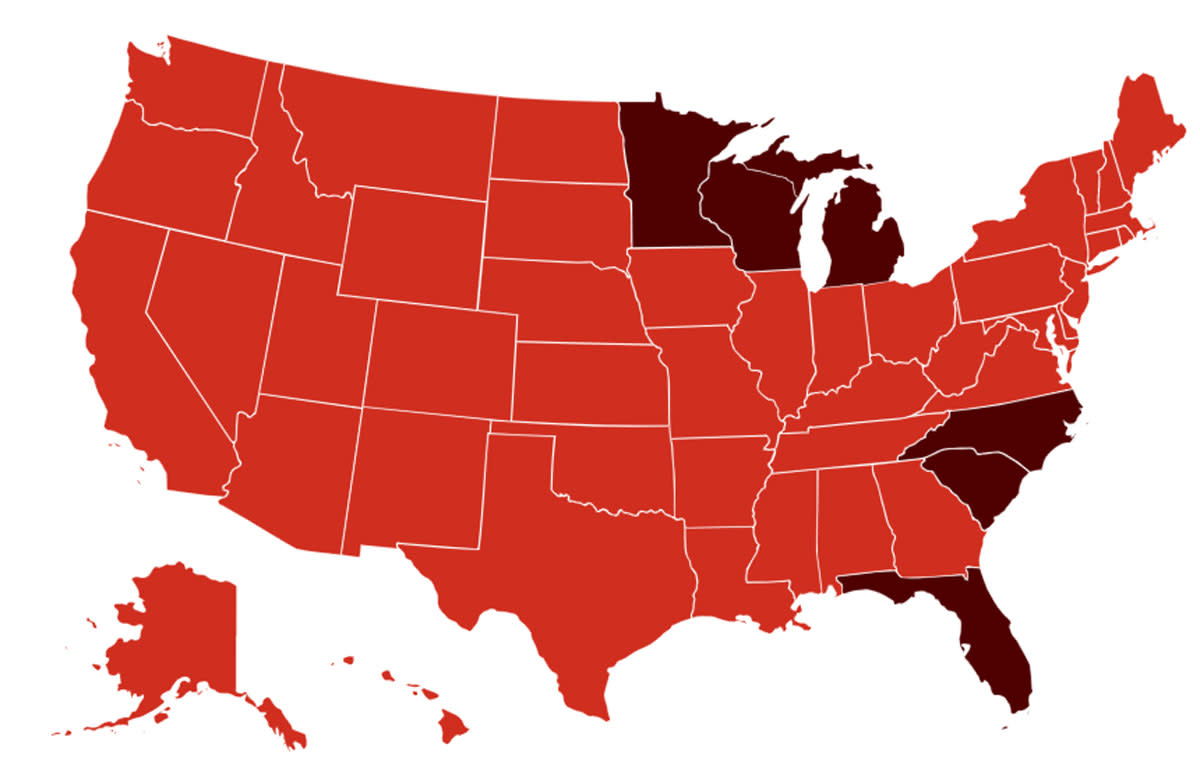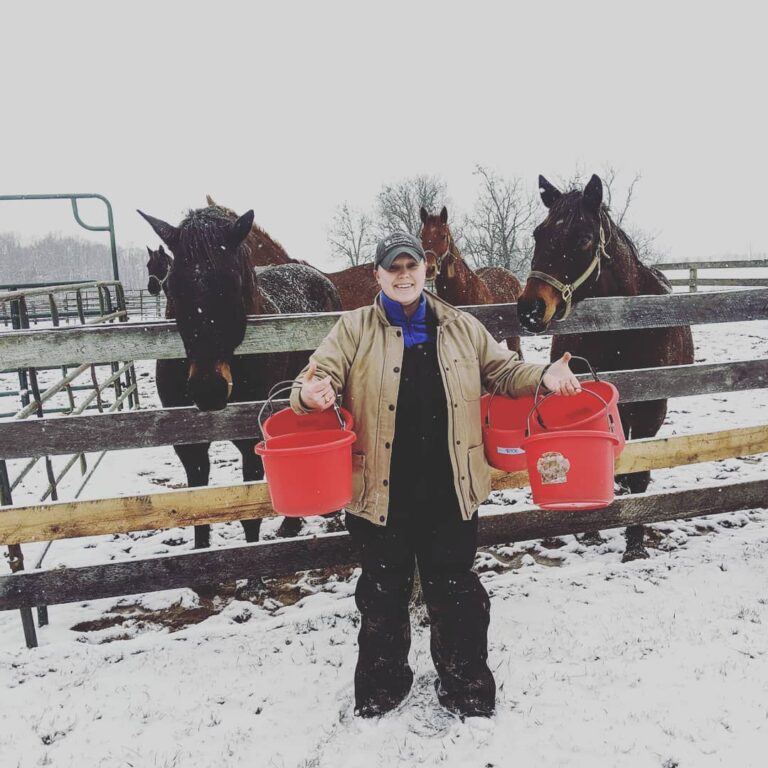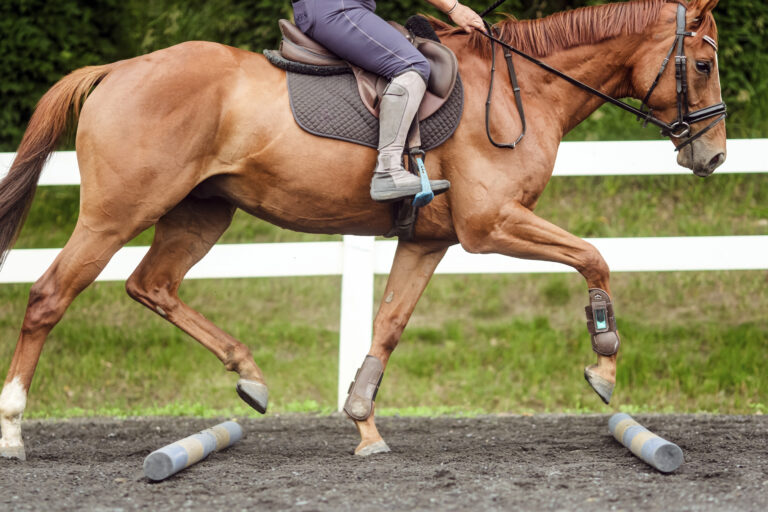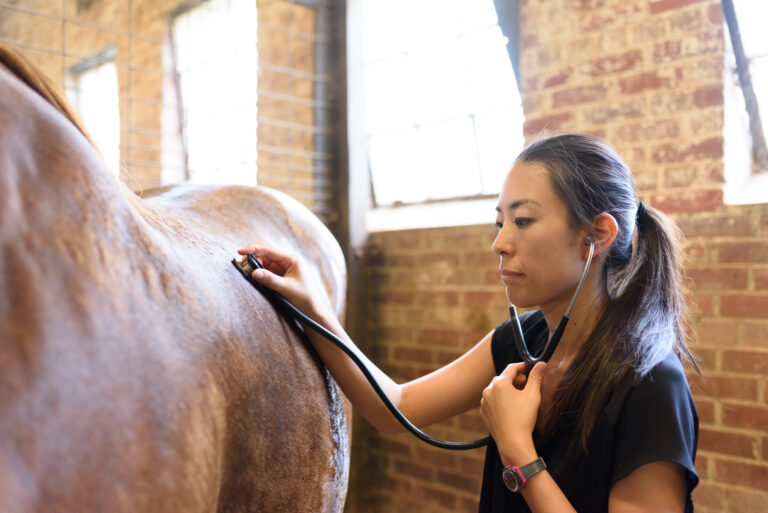
The Equine Disease Communication Center provides confirmed reports of horse diseases throughout North America. Following are the reports of Eastern equine encephalitis (EEE) in horses across the country for October 1 through October 27, 2020.
Florida
In Florida there were confirmed EEE cases in Hendry and Lee Counties, according to the Florida Department of Agriculture and Consumer Services.
In Hendry County, a 2-year-old Quarter Horse filly had onset of clinical signs on October 8 that included incoordination, possible blindness and laminitic signs in her front limbs. She was confirmed with EEE on October 16. The vaccinated mare was affected and alive at the time of this report.
In Lee County, a 6-year-old Quarter Horse mare had onset of clinical signs on October 4 that included circling and no vision in her left eye. She was confirmed with EEE on October 9. The unvaccinated mare is recovering.
Michigan
EEE cases were confirmed in Menominee, Kent and Baraga Counties in Michigan in October, according to the Michigan Department of Agriculture and Rural Development.
In Menominee County, an 8-year-old Haflinger mare had onset of clinical signs on October 3 that included wandering, difficulty swallowing, seizures, and being down without the ability to get up. The mare was confirmed with EEE on October 15. The unvaccinated mare was euthanized.
In Kent County, a 15-year-old Standardbred cross mare had onset of clinical signs on October 1 that included bladder atony, being down and nystagmus. She was confirmed with EEE on October. 12. The unvaccinated mare was euthanized.
In Baraga County, a 12-year-old Quarter Horse mare had onset of clinical signs on September 20 that included agitation, ataxia, fever lethargy and muscle twitching. She was confirmed with EEE on October 1. The unvaccinated mare was euthanized.
Minnesota
The Minnesota Board of Animal Health confirmed one case of EEE in Benton County in October.
The case was in an 11-year-old Quarter Horse mare that had onset of clinical signs on September 27 that included fever, muscle fasciculations, nystagmus and recumbency. She was confirmed on October 9. The unvaccinated mare was euthanized.
North Carolina
The North Carolina Department of Agriculture and Consumer Services reported a positive case of EEE in a weanling filly in Johnston County. The filly was unvaccinated.
Ontario, Canada
In Ontario Canada, three horses were confirmed with EEE as was reported by the Ontario Ministry of Agriculture, Food and Rural Affairs. Those horses were in Lambton County.
The first horse was a 20-year-old Quarter Horse gelding that had onset of clinical signs on September 22 that included seizures, paddling, profuse sweating and fasciculations over the triceps. He was confirmed with EEE on October 9. The unvaccinated gelding was euthanized.
The second horse was an 11-year-old Quarter Horse gelding that had onset of clinical signs on September 22 that included being anxious, muscle fasciculations, ataxia, drooling and a deviated muzzle. He was confirmed with EEE on October 9. The unvaccinated gelding is deceased.
The third horse was a yearling filly that had onset of clinical signs on September 22 that included being down. She was confirmed with EEE on October 9. The unvaccinated filly was euthanized.
The two adult horses were from the same farm, and the filly was on a farm five miles from the other premises.
Wisconsin
EEE was confirmed in Oneida, Polk and Shawano Counties in Wisconsin according to the Wisconsin Department of Agriculture, Trade and Consumer Protection.
In Polk County there was one facility that had a confirmed case of EEE in a 6-year-old Quarter Horse mare. She had onset of clinical signs on October 1 that included ataxia, being febrile and neurologic. She was confirmed on October 16. The unvaccinated mare was euthanized. On that same property a second equine was euthanized after showing similar clinical signs, but it was not tested.
In Shawano County a yearling colt had onset of clinical signs on October 9 that included ataxia, dysphagia, leaning against objects and tongue hanging out. The colt was confirmed on October 16. The unvaccinated colt was affected and alive at the time of this report.
Also in Shawano County a 10-year-old Standardbred mare had onset of clinical signs on September 24 that included ataxia, dullness and recumbency. She was confirmed with EEE on October 2. The unvaccinated mare is deceased.
In Oneida County, a 17-year-old Miniature Horse mare had onset of clinical signs on October 1 that includes difficulty standing, muscle fasciculations, recumbency and seizures. She was confirmed on October 9. The unvaccinated mare was euthanized.
South Carolina
The state veterinarian’s office in South Carolina reported a confirmed case of EEE in Lexington County. The 3-year-old Quarter Horse gelding was unvaccinated and was euthanized.









